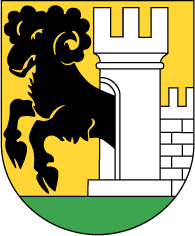|
Lenzkirch
Lenzkirch is a municipality in the Black Forest. It lies in the district of Breisgau-Hochschwarzwald in Baden-Württemberg in Germany. Geography Lenzkirch is on the Black Forest plateau, in the valley of the river Haslach, which near the south east border of the municipality merges with the Gutach to become the Wutach. The Urseetal, a glacial valley, falls from the southwest corner of the municipality. The highest point of the municipality is the 1192m Hochfirst peak, marked by the Hochfirst Tower, on the boundary with the neighbouring municipality of Titisee-Neustadt. Neighbouring municipalities Clockwise from the north, Lenzkirch borders on Titisee-Neustadt, Friedenweiler, Löffingen, Bonndorf, Schluchsee and Feldberg. All are in the Breisgau-Hochschwarzwald district, except Bonndorf which is in Waldshut. Constituent communities The municipality is made up of the town of Lenzkirch (3,341 inhabitants, including about 50 in the adjacent village of Grünwald) and th ... [...More Info...] [...Related Items...] OR: [Wikipedia] [Google] [Baidu] |
Black Forest
The Black Forest (german: Schwarzwald ) is a large forested mountain range in the state of Baden-Württemberg in southwest Germany, bounded by the Rhine Valley to the west and south and close to the borders with France and Switzerland. It is the source of the Danube and Neckar rivers. Its highest peak is the Feldberg with an elevation of above sea level. Roughly oblong in shape, with a length of and breadth of up to , it has an area of about 6,009 km2 (2,320 sq mi). Historically, the area was known for forestry and the mining of ore deposits, but tourism has now become the primary industry, accounting for around 300,000 jobs. There are several ruined military fortifications dating back to the 17th century. History In ancient times, the Black Forest was known as , after the Celtic deity, Abnoba. In Roman times (Late antiquity), it was given the name ("Marcynian Forest", from the Germanic word ''marka'' = "border"). The Black Forest probably represented the bo ... [...More Info...] [...Related Items...] OR: [Wikipedia] [Google] [Baidu] |
Breisgau-Hochschwarzwald
Breisgau-Hochschwarzwald (french: Arrondissement de Brisgau-Haute-Forêt-Noire) is a (district) in the southwest of Baden-Württemberg, Germany. Fifty towns and municipalities with 133 settlements lie within the district. The district itself belongs to the region of Freiburg with the region of Southern Upper Rhine. The municipal offices are in the city of Freiburg im Breisgau which is almost entirely surrounded by Breisgau-Hochschwarzwald, but is independent of it. In addition, the council has three satellite offices in Müllheim, Titisee-Neustadt and Breisach am Rhein. Geography Location Breisgau-Hochschwarzwald covers areas which are very different in scenic character: in the Upper Rhine Plain are the Markgräflerland and its foothill zone, which is continued north of the Breisgau with the hills of Kaiserstuhl, the Tuniberg and the Nimberg. Within the district, the Black Forest covers the side valleys opening onto the Rhine Plain - the Glottertal, the valley of the D ... [...More Info...] [...Related Items...] OR: [Wikipedia] [Google] [Baidu] |
Titisee-Neustadt
Titisee-Neustadt () is a municipality in the district of Breisgau-Hochschwarzwald in Baden-Württemberg in southern Germany. It is made up of the six communities of Neustadt, Langenordnach, Rudenberg, Titisee, Schwärzenbach and Waldau. The town of Neustadt is a spa known for its Kneipp hydrotherapeutic and curative methods. Furthermore, it is a winter sport center. Geography The community of Titisee lies on the north shore of Titisee, a lake in the eastern Feldberg in the Black Forest, which ranges from 780 to 1192m above sea level. The community of Neustadt is found 5 km to the east. The town lies on a small river called the Seebach (Lake Brook) as it comes in from Feldberg-Bärental to feed Titisee, as the Gutach (Good Water) as it flows out of the lake, and east of Neustadt, where it merges with the Haslach to become a whitewater torrent, as the Wutach (Furious Water). After flowing out of the town, it passes through the well known ''Wutachschlucht'' (Wutach Gorge) ... [...More Info...] [...Related Items...] OR: [Wikipedia] [Google] [Baidu] |
Wutach (river)
The Wutach is a river, 91 kilometres long, in the southeastern part of the Black Forest in the German state of Baden-Württemberg. It is a right-hand tributary of the Rhine. In its lower reaches it flows for about 6 kilometres along the border with the canton of Schaffhausen, Switzerland. Name The name Wutach means "furious water", referring to the whitewater rapids in the gorge. ''Wut'' is recognisably cognate to a modern German word for anger; ''ach'', which forms part of the names of many rivers in the region, comes from an old Celtic word for water, cognate with Latin ''aqua''. Course The river changes its name twice before it discharges into the High Rhine near Waldshut: It rises in the Southern Black Forest as the Seebach in a highland hollow known as the ''Grüble'', only a few metres below the summit of the Seebuck, a subpeak of the Black Forest's highest mountain, the Feldberg. Shortly thereafter it drops in three cascades through a height of 62 metres down the F ... [...More Info...] [...Related Items...] OR: [Wikipedia] [Google] [Baidu] |
Wutachschlucht
The Wutach Gorge (german: Wutachschlucht) is a narrow, steep-sided valley in southern Germany through in the upper reaches of the River Wutach with three gorge-like sections, the lowest of which is also called the ''Wutachflühen''. The gorge cuts through the southern part of the Baar region from the eastern side of the High Black Forest heading eastwards to the '' Trauf'' the steep, northwestern flank of the Swabian Jura, which transitions to the Randen mountains here. The 60- to 170-metre-deep gorges stretch for over 33 river kilometres (excluding side gorges) and are notable for many reasons. Their geologically young, prototypical and actively continuing development results in a great variety of geotopes and biotopes that support a correspondingly rich range of flora and fauna. The gorges are very popular with tourists and played an important role in the establishment of conservation consciousness in southwestern Germany. The Wutach Gorge is part of the Southern Black Forest ... [...More Info...] [...Related Items...] OR: [Wikipedia] [Google] [Baidu] |
Haßlach (river)
The Haßlach (alternative spelling: ''Hasslach'') is a river in the Upper Franconian region of Landkreis Kronach in Bavaria, Germany. It flows into the Rodach River in the town of Kronach. See also * List of rivers of Bavaria References External links Course of the Haßlach in the Atlas of Bavaria Rivers of Bavaria Rivers of Germany {{Bavaria-river-stub ... [...More Info...] [...Related Items...] OR: [Wikipedia] [Google] [Baidu] |
Christlich Demokratische Union Deutschlands
The Christian Democratic Union of Germany (german: link=no, Christlich Demokratische Union Deutschlands ; CDU ) is a Christian democratic and liberal conservative political party in Germany. It is the major catch-all party of the centre-right in German politics. Friedrich Merz has been federal chairman of the CDU since 31 January 2022. The CDU is the second largest party in the Bundestag, the German federal legislature, with 152 out of 736 seats, having won 18.9% of votes in the 2021 federal election. It forms the CDU/CSU Bundestag faction, also known as the Union, with its Bavarian counterpart, the Christian Social Union in Bavaria (CSU). The group's parliamentary leader is also Friedrich Merz. Founded in 1945 as an interdenominational Christian party, the CDU effectively succeeded the pre-war Catholic Centre Party, with many former members joining the party, including its first leader Konrad Adenauer. The party also included politicians of other backgrounds, including libe ... [...More Info...] [...Related Items...] OR: [Wikipedia] [Google] [Baidu] |
Schaffhausen
Schaffhausen (; gsw, Schafuuse; french: Schaffhouse; it, Sciaffusa; rm, Schaffusa; en, Shaffhouse) is a list of towns in Switzerland, town with historic roots, a municipalities of Switzerland, municipality in northern Switzerland, and the capital of the canton of Schaffhausen, canton of the same name; it has an estimated population of 36,000 It is located right next to the shore of the High Rhine; it is one of four Swiss towns located on the northern side of the Rhine, along with , the historic , and . The old town has many fine Renaissance era buildings decorated with exterior frescos and sculpture, as well as the old canton fortress, the ''Munot''. Schaffhausen is also a railway junction of Swiss and German rail networks. One of the lines connects the town with the nearby Rhine Falls in , Europe's largest waterfall, a tourist attraction. The official language of Schaffhausen is (the Swiss variety of Standard) Swiss Standard German, German, but the main spoken language ... [...More Info...] [...Related Items...] OR: [Wikipedia] [Google] [Baidu] |
Clockmaking
A clockmaker is an artisan who makes and/or repairs clocks. Since almost all clocks are now factory-made, most modern clockmakers only repair clocks. Modern clockmakers may be employed by jewellers, antique shops, and places devoted strictly to repairing clocks and watches. Clockmakers must be able to read blueprints and instructions for numerous types of clocks and time pieces that vary from antique clocks to modern time pieces in order to fix and make clocks or watches. The trade requires fine motor coordination as clockmakers must frequently work on devices with small gears and fine machinery. Originally, clockmaker were master craftsmen who designed and built clocks by hand. Since modern clockmakers are required to repair antique, handmade or one-of-a-kind clocks for which parts are not available, they must have some of the design and fabrication abilities of the original craftsmen. A qualified clockmaker can typically design and make a missing piece for a clock without a ... [...More Info...] [...Related Items...] OR: [Wikipedia] [Google] [Baidu] |
Precision Engineering
Precision engineering is a subdiscipline of electrical engineering, software engineering, electronics engineering, mechanical engineering, and optical engineering concerned with designing machines, fixtures, and other structures that have exceptionally low tolerances, are repeatable, and are stable over time. These approaches have applications in machine tools, MEMS, NEMS, optoelectronics design, and many other fields. Overview Professors Hiromu Nakazawa and Pat McKeown provide the following list of goals for precision engineering: # Create a highly precise movement. # Reduce the dispersion of the product's or part's function. # Eliminate fitting and promote assembly, especially automatic assembly. # Reduce the initial cost. # Reduce the running cost. # Extend the life span. # Enable the design safety factor to be lowered. # Improve interchangeability of components so that corresponding parts made by other factories or firms can be used in their place. # Improve quality contro ... [...More Info...] [...Related Items...] OR: [Wikipedia] [Google] [Baidu] |
Tourism
Tourism is travel for pleasure or business; also the theory and practice of touring (other), touring, the business of attracting, accommodating, and entertaining tourists, and the business of operating tour (other), tours. The World Tourism Organization defines tourism more generally, in terms which go "beyond the common perception of tourism as being limited to holiday activity only", as people "travelling to and staying in places outside their usual environment for not more than one consecutive year for leisure and not less than 24 hours, business and other purposes". Tourism can be Domestic tourism, domestic (within the traveller's own country) or International tourism, international, and international tourism has both incoming and outgoing implications on a country's balance of payments. Tourism numbers declined as a result of a strong economic slowdown (the late-2000s recession) between the second half of 2008 and the end of 2009, and in consequence of t ... [...More Info...] [...Related Items...] OR: [Wikipedia] [Google] [Baidu] |


.jpg)





